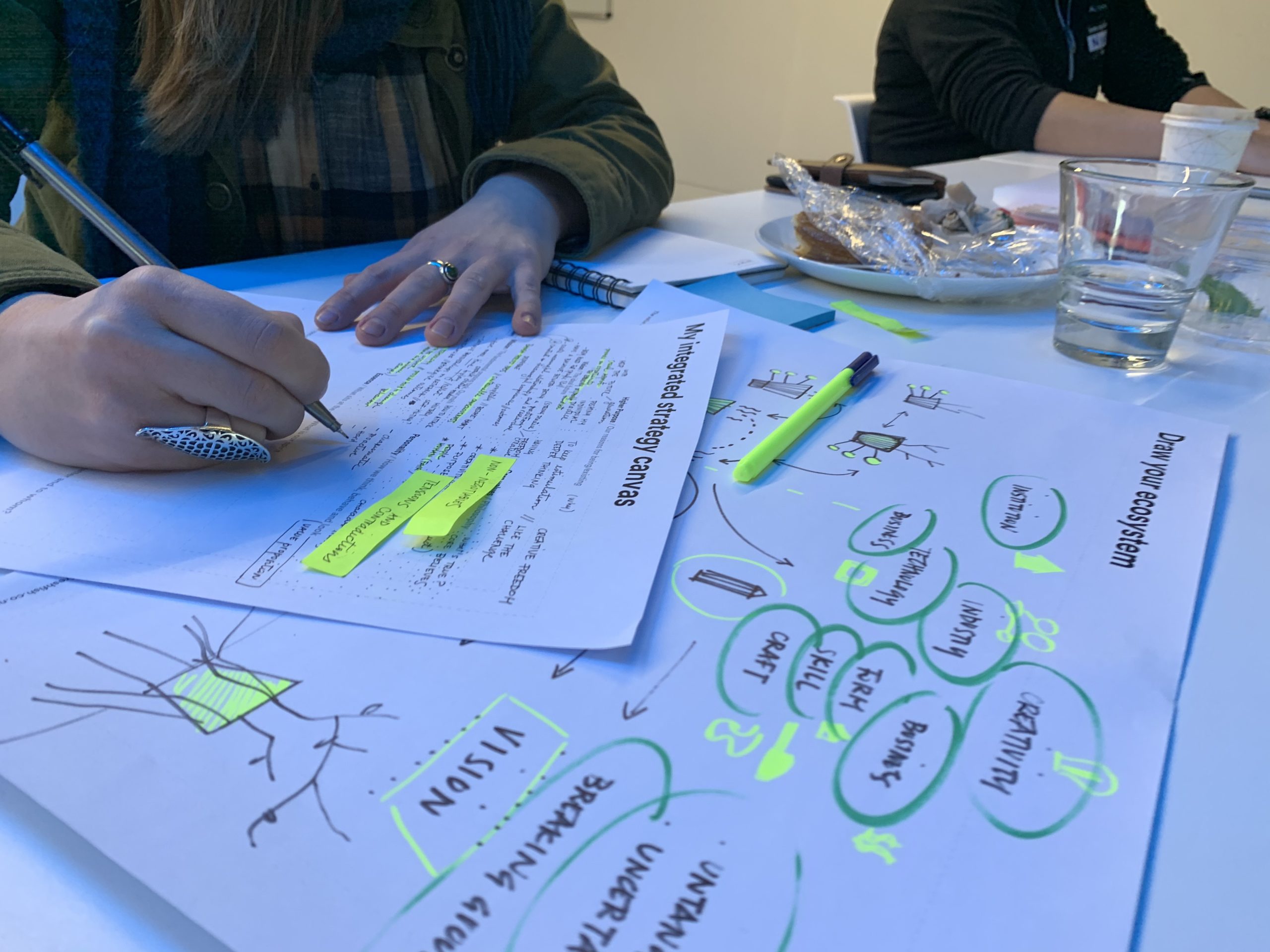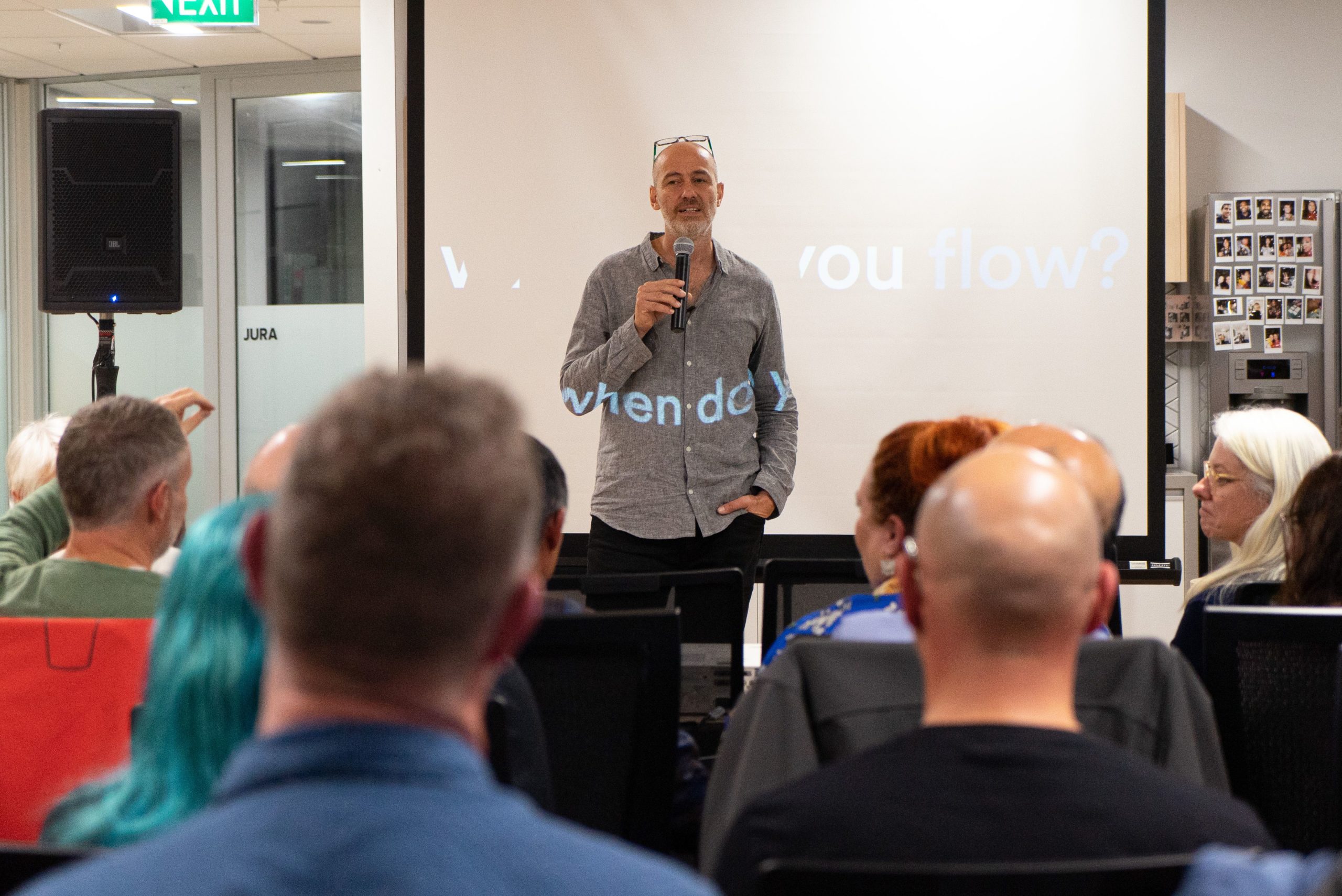5 minutes with… Raul Sarrot
Ahead of his Wellington workshop on Friday 25th September 2020, we spoke to Raul Sarrot about The Value of Strategy in times of flux and disruption, staying ahead of the curve, the qualities of design strategists, the importance of curiosity, and design strategists role in shaping our future.

We are living through unprecedented economic and social disruption and a lot of our clients are needing to rethink their offer and way of meeting market – why is Brand strategy important in times of flux?
Strategy is important at all times but yes, in times of flux, becomes even more critical. Without a clear strategy –one that has a clear purpose, a long term vision, a user-centered value proposition and a well-defined activation plan (both short and long term)– a business is just treading water or shooting in the dark. In times of flux, even if you might have to rethink or reconsider many aspects, having your Strategy as a ‘guide’ helps you and/or your business to stay on track without losing sight of your original higher purpose and the vision. Also, if it has been designed exploring potential future scenarios, it provides you with the flexibility and resilience to face some upcoming challenges or at least gives you the agility to adapt to unforeseen challenges.
With the needs of our clients, technological leaps, an economic shock and the business environment all moving so incredibly fast, how does an agency (or designer) stay ahead of the curve?
Indeed, staying ahead of the curve is a very tricky thing these days. I would say it is not so much anymore about staying ahead of the curve, because nobody knows exactly what ‘curve’ is coming. However, what is becoming more and more fundamental is not to lose track of your ideal ‘destination’ and to have the ability to adapt to any curves that the ‘road’ might have for you.

What qualities make a designer a good strategist?
Great question. I think a designer –by nature– share many common traits with a strategist. You need to understand what is the aim, the purpose, the challenges, incorporate the user/human perspective, understand how you are planning to add value and fundamentally what are the game-changing future opportunities and possibilities. What a designer also might have as a superpower is the ability of ‘visualising’ things and that is great asset that can be incorporated to a strategy. However, this could be a double-edge sword if not managed correctly as designers sometimes ‘fall in love’ with an idea, when that is not the point of the strategy at all. As a strategist, you have to balance creativity with rigour. In either case, both as a designer or as a strategist you need to apply ‘empathy’ to put yourself in other people’s shoes (your clients, their clients, etc) and embrace uncertainty and ambiguity to understand different points of views before considering what is the best future scenario.

What do you wish you had known about brand strategy before you learnt it the hard way?
Who said I learnt it the hard way? (LOL) Not sure if I learnt things ‘the hard way’. My natural curiosity as a designer made me always wonder about the gap or bridge between creativity and business or between the big idea and making it real in the wider world. I guess I could say that I would have liked to know that the name of the ‘bridge’ is strategy. Having said that even if the concept of strategy has been coined long ago, coming from warfare (like Sun Tzu well-known thoughts), the concept of brand strategy is not that old and is constantly evolving. Before that was either a very business model oriented strategy (more corporate than brand) or a great advertising idea.

Is there a design strategy project you have undertaken at Fresh Fish that is memorable because it challenged you? IF so what did you learn from that project?
t’s always hard to name ‘a project’ that is memorable or that has been challenging as challenge itself is what we embrace as designers and as strategists in every project. If there’s no challenge then they don’t need us. Challenging projects are when there seems to be a ‘hairy’ or ‘wicked’ problem (sometimes could be a ‘systemic problem’). It is also challenging when the decision makers on a project are not involved or aligned with the strategy. Another challenge could be when the client or business doesn’t really have a great product or service, an interesting story or a way to offer real value (point of difference) and that leaves you with very little to work with. Lastly, it’s also challenging when you work with international teams that might not be on the same space at the same time (thing we are seeing more and more these days) as time difference (and different contexts and mindsets) make harder to bring teams together.
What have I learnt? That the best conditions to make a strategy successful is when you have some/all the things mentioned above on your side: a good product/service that has the potential to add real value, that has an interesting story and that has behind an aligned team that is actually committed to adopt and activate the strategy.
Can you give us an example of an unexpected positive outcome from a brand strategy project?
Normally strategies are per se ambitious. You envision ideal future scenarios and that normally require time and effort to achieve or develop, hence it would be rare that the positive outcome is unexpected. A good strategy also considers those scenarios. Having said that, yes, there could always exist the ‘ludic’ or serendipitous aspects, such as users finding a new use for your product or a campaign becoming viral and going beyond expectations, but that is not really strategy.

What can participants expect from your upcoming workshops?
These workshops have 2 aims: one is to demystify and clarify all the components of a strategy; the other is to empower participants to create their own strategic canvas and even leaving it open for them to customise it. After running a few workshops with this format is great to see the results and the feedback from participants.
What advice do you have for designers transitioning their thinking from the visuals of identity to the mechanics of strategy?
Great question. My advice would be for them to also take strategy as a design challenge, but without the tangible output. It’s like a philosophical or theoretical piece of design. The opportunity is for designers to have a deeper dive into the business or enterprises and really understand their needs and expectations to help them design their future. That is what a strategy does, design futures.

Finally, given the flux and disruption, we spoke about above… Do you have any predictions on what else might change for designers over the next few years?
It’s hard to make predictions in the fluid reality we live in. As per the saying ‘the only constant is change’ the only advice is for designers to get ready to work on very fluid scenarios and with very ‘open systems’ that can adapt as required without losing sight of what is core. Designers and Strategists will understand their role in society is to act as a ’nexus’ or medium between people, environment, and technology and –as these are constantly changing– the role of design and strategy should adapt accordingly.




